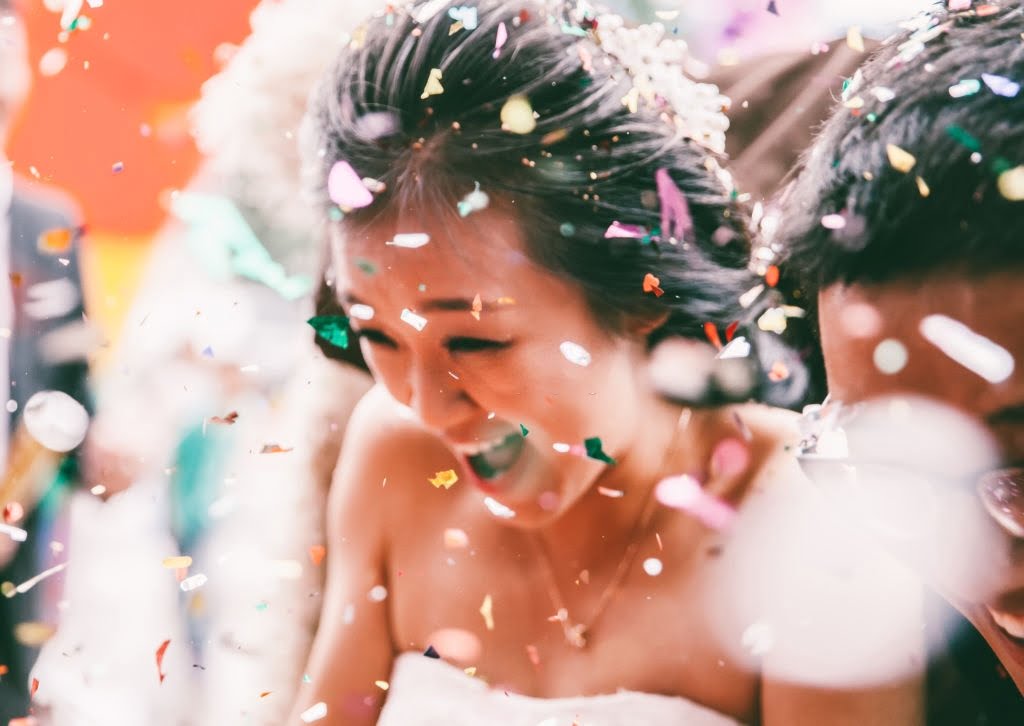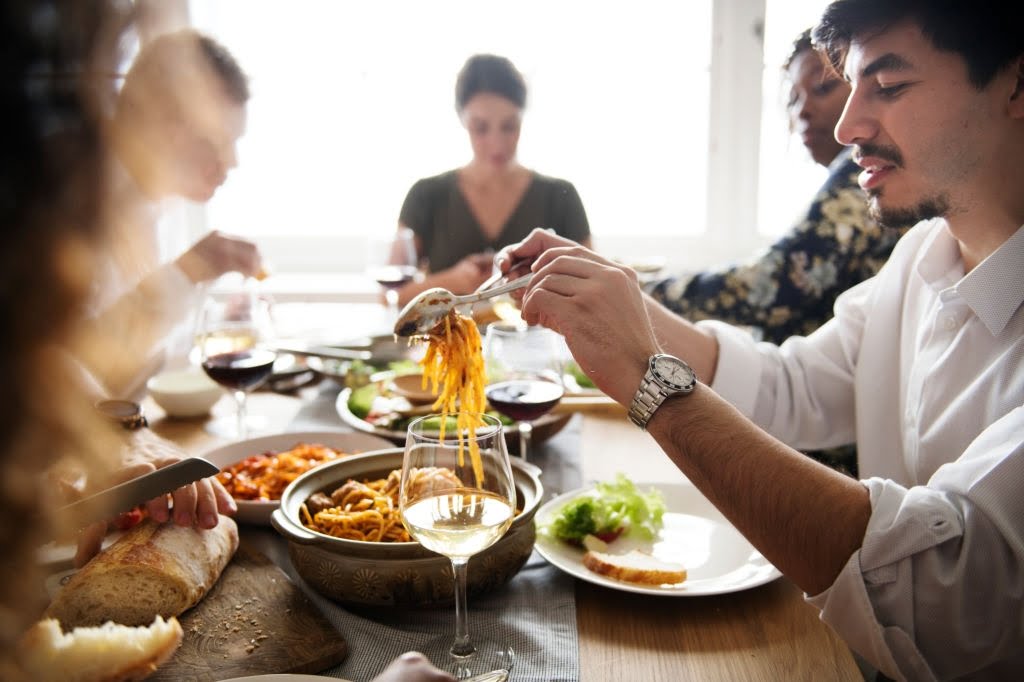A Comprehensive Perspective of Intricate Marriage Rituals in China, Singapore and US

From a westerner’s point of view, anything past the border can seem foreign. From languages to cultural practices we might be unfamiliar to how the world approaches various aspects of society concerning religion or gender equality to marriage. Chinese traditional marriage practices in particular have always been a fascination to Westerners. Where we might see something as old fashioned and sometimes depredating to women if the wedding is forced upon her. By studying Chinese marital customs and the organization of the action set in place leading up to the big day, we can learn more on this ancient Chinese institution.
In much cultures, an arranged wedding is to be expected. Westerners though view this practice as old fashioned and serves as confining the woman to a marriage where she has no say in it, in countries like China there is not much to be done. Now in Chinese society, the ceremonial ritual of a tradition wedding is a ritual that involves an arrangement between two families, mostly of the same rank. Romantic love of two main parties is allowed and if it wasn’t there at the beginning it could form later on, but it is the motive for the alliance. China, much like other countries, has multiple religions and faiths that its population practice. Depending on the religion the bride hails from, Chinese weddings have different traditions and little rituals. One of them is the Tea Ceremony which dates back a thousand years, or the use of multiple musicians. These musicians serve as accompaniment for the bridal parade, coming along the bride to the groom’s house.
We can trace traditional wedding practices to over 2,400 years ago, putting religion and culture in a big melting pot. The main objective of joining two families was to ensure a proper succession of great descendants so the family name can go on for a long time. Parents pick suitors for the child that will assure financial bloom. One of the most important aspects of the arranged marriage was to encourage great fertility, this is also celebrated during the ceremony. Wealth is an extremely intricate part to the ceremony as it is highly presented in the beauty of the ritual. Now Chinese marriage is far from a romantic endeavor. More than a willing partnership, it is a social obligation, a contract between parents at the betrothal party (the usual place where the future bride and groom will meet). During this party, it is proper etiquette to exchange gift giving, it is the first step to incorporate the woman in the groom’s family.
The intricate marriage tradition is as important as the day itself to avoid anyone of the two parties from backing out. Rank is what families look for. The objective is to give away the daughter to a family with either status or an important position in the community. In order for this to occur, especially if the woman’s family is of lesser rank, the men’s family is compensated for the acceptance of the bride. This compensation is called the dowry which can cause most tension in the marital proceedings. This tradition has been practiced for generations over centuries. Although today arranged marriages are not as promoted as before considering the spread of western culture. We will see the ritual of Chinese marriage in light of material and social cultural aspects and compare them to other asian and western cultures.
In order to show that Chinese weddings are extremely well thought out and are in all aspects made to please the bride and grooms family ancestors, we will bring forward numerous scholarly articles composed of articles by professors and graduate students. These include both Prof. Syharan Lubis, Prof T. Silvana Sinar and Dr. Muhizar Muchtar’s “Translating Chinese Traditional Wedding Signs into English”, a chapter from “ International Journal of English Language and Translation Studies” (2018). In their findings we learn a part of the history, background, and significance of traditional Chinese marriage rituals. In addition, to help paint a clear picture of these weddings, we will use the thesis developed by Yi Long’s “ Cultural Differences between Chinese and American Weddings” from the University of Buffalo of 2018. The author supports that Chinese weddings are a very big indicator of the rich and intricate culture of an ancient civilization. These weddings according to Long are almost completely influence by religion. The author also shares the important marital values of the Chinese People.
In another article by Lei Guo and Lan Wang from 2016 “ Comparisons between Chinese Traditional Marriage Customs and American Marriage Customs”, we have the various differences between American and Chinese Marriages depicted as well as the step by step of the marriage ceremony showing once again how intricate and planned the ritual is. In a paper published in 2010 by Licas J. Schwartze at the University of Nebraska, we learn more about a not so underground practice called the ghost wedding practiced by the Singapore Chinese. All these intellectuals come together to give us a better insight on a very old tradition of marital rituals of a county dipped in secrecy from a Westerners perspective. They also help us see the gender inequality of these arranged practices.
Weddings are meant to celebrate the union of two people who fell in love and decided on their own volition to spend the rest of their lives together and perhaps one day have children, though we know that in a lot of parts of the world it is not the case. Some marriages are arranged and have policies on the number of children they should have. In the chapter 5 of Xuewen Sheng’s ‘The One-Child Policy and Its Impact on Chinese Families’ (2004), we find out more about the state of mind of Chinese families. Parents of both the future groom and bride approach the wedding carefully and plan the entire process from the pairing of the woman to her future suitor to the socialization of both the men and woman’s families.
We learn everything is set in place to ensure prime fertility in the woman. In the book we learn that though a new born is greatly expected, the gender expected is a that of a boy. Raising a boy in Chinese culture is easier as he will be easily married whereas the girl has to have a dowry which is why China ends up with a lot of abandoned baby girl. This underlines, past the ceremony of marriage, the growing societal issue of gender inequality in an ancient ritual.
The first step to completing the marriage ritual: the pairing up of two families.
The first step in the marital ritual is perhaps the most necessary step to any wedding. None of the wedding rituals would happen if not for the pairing up. The future bride and groom are not in charge with picking their own suitors. To follow tradition, a marriage in China was based primarily on the command of their parents and the help of a match maker. The matchmaker, usually a woman, orchestrates the pairing up of the couple. This woman makes sure the social and economic status between the two families match well. So marriage, other than a product of love, is an issue of connecting political and socioeconomic resources between the two Chinese families (Sheng, 2004).
This shows once more how little choice in the matter the two main parties have. But according to a study conducted in 1985 found by the author, arranged marriages in China have dropped from 54.7% to 0.9%. This entire scene was depicted in a very popular Disney movie called “Mulan” in 1998. In the beginning of the movie, Mulan is finally of age to get married. Her mother and grandmother prepare her to meet with the matchmaker. Even though she is not ready to be a bride, she has to play pretend. Brides in the movie are presented to be quiet porcelain dolls, pretty and socially adequate for their future husband and their family. In real life there is more. More than status there is the question of fertility, the pairing is made to ensure the best possible fertility to ensure both family’s descendants.
‘Urban’ is important. This means that people living in the big cities like Beijing or the island Hong Kong, are more likely to have an open mind and be effected by their surroundings prompting them to make their own choices when it comes to choosing their own partners. Of course it is important for the country to get with the times. According to the author, based on a study found, emphasizing the state of a woman and matching status with a man is less important. Now there is a little more importance placed on the level of education, their job title, a proper temperament (Sheng, 2004). Yet it remained that people from rural communities prioritized still moral standing rather than education or compatibility. To some young people, early marriage means getting having an early start on building a family.Wedding values of Chinese society, enhanced by their religious beliefs.
Every country or society has a set of values linked to their cultures. These values or principles can be applied to various aspects of life from how to pursue your education to your occupation, to choosing your partner. Values are equally as important when preparing for your marriage. Love and marriage are probably the institutions the most influenced by cultural values. In China, marriage brings to families together as one. The most important values, at least before the 1950s, were honor and societal status ( Long, 2018). Now people, especially in big cities, live their own life and plan their own wedding but something remains: the respect they have for their elders who are more old fashioned. People have their preferences but in the end Chinese culture gives less choice to future married couples. Important values shared in multiple families, good fertility is brought on by a presentation of s good wedding atmosphere. Chinese weddings are pleasant and should in theory inspire joy and rejoicing (Long, 2018).
This is explained by the collectivist nature in Chinese society. A good family relation is probably one of the most important values. People put the needs of the many before their own to please the family. Having a big wedding ceremony is part of that. The Chinese value their ‘allegiances’. Family values and beliefs are even considered when choosing the wedding date. The two consenting families come together to consult an astrologist. This person helps them pick out a date that brings the most auspicious gifts for the new family. All is set in place to bring good fortune to the newly weds. Though values can go beyond family and the search of good fortune. Religious influence is as important. Though a lot of people in China are no longer very religious. The main belief system followed in China is Taoism, which is a big influence in Chinese traditions. It is believed that the man and the women are the yang and yin respectively. The two beings coexist in harmony. Even the wedding ceremony obeys the laws of yin and yang. Which brings again to conclusion that no matter people’s beliefs, weddings remain heavily influenced by religious reasoning. Taoism respects Chinese customs and traditions, making the couples respect the Earth and the Heavens.
For the longest time Americans have been fascinated with Chinese wedding rituals and all the elements that go into creating such a beautiful grandiose ceremony. This can probably be explained by all the clear differences between Chinese and Americans weddings. We can start with the procedures to making a good wedding (Edward, 2005) .
The preparations start long before the big day. Chinese families are perhaps more formal with the proceedings like the invitations. In order to invite guests, Chinese families personally hand out the invitation to the select few. We find many differences between Chinese and American wedding decorations as well as the jewelry (Long, 2018). A woman in America getting married choses any type pf jewelry whereas Chinese brides have a set of pieces. Golden earrings, bracelets and a necklace usually are passed down generation to generation. In China, the venue of the reception is held where the main dinner is. The room is decorated with a backdrop, a centerpiece, favors and gifts boxes. The main color for Chinese weddings is red, a symbol of prosperity and fertility. Though much like American weddings the decoration is meant to be romantic and grandiose (Long, 2018).
Chinese weddings were highly impacted by western culture which is why many new brides prefer the ‘White’ American dress over the traditional Chinese style dress.
American dresses also vary from white, to off-white and silver. The color white is inspired by the Christian influence of Western culture signifying the purity of the bride. In addition we find differences in the location where the wedding is held. In America, there is a ceremony in a Church or even your house, not too far from where the reception is held where the guests can mingle. The food served is usually catered with a full meal and champagne. In China there are two banquets held. The first a traditional celebration at the bride’s house. The second is at the groom’s, equally as traditional and formal. The food served at Chinese weddings is a full meal with white wine and nice desserts (Edward, 2005). The vows in America are to promise in front of every body love and respect to the partner. In China, the couple bows to the Heavens and the Earth, then to their parents for thanksgiving and appreciation than to each other for love and respect.
Though arranged marriages are a little less traditional, they are still a part of Chinese culture, yet we find there is another underground practice done by the Singapore Chinese. This practice is called ghost marriages. Once again, urban population is less inclined to participate which is why most ghost marriages are practiced in rural areas since the Shang dynasty in the second millennium B.C. Where a traditional marriage celebrates the love of two partners and serves as a send off to a new life, ghost marriages are a send off to the death, ore more precisely for the dead. It is believed in Chinese culture that the dead have the same needs as the living, they need a partner to help guide them through the darkness.
Modern ghost weddings look less strange than they did before, and they are not as publicized, now only close family attends the ceremony, they remain a secretive affair. Like a traditional wedding, the ceremony takes place either at the groom’s home or at the temple. Next the family has a luscious feast where dead family members are represented on a ‘spirit’ tablet or a bamboo tablet which is burned as a funeral offering, in a closed coffin. Ghost marriages can be planed as soon as the person, future partner, is gone. Parents of the diseased groom plan to have the wedding ceremony and the funeral simultaneously. The bride is accompanied to her husband’s grave. This is a symbol of their finalized marriage. Parents believed that the way to appease the spirit of their dead son was to marry him, this way his spirit could be tied to that person. Another reason that shows how little the bride’s feelings are taken into consideration is that once she is married she belongs to the family and has to help with domestic tasks.
In another instance, the Chinese have a strong belief system that includes a custom that the elder brother should be married before his younger siblings. In the case where he dies before this happens, the parents organize a ghost marriage. The little siblings can marry without incurring the wrath of his dead brother’s spirits. One last reason we notice for the Singapore Chinese to practice ghost marriages is to establish kinship groups with other families and establish a place for the family alter and for their ancestors to be able to return easily to communicate with the living.
China has a set of rules and rituals to perform a proper wedding ceremony, as do many asian countries. Tibet also has very precise rituals and traditions to follow. Tibet is situated at the south of China right over Nepal and Bhutan. Tibetans base their social and marital partnership in light of the social status of the people. This status and cultural organization are determined by the geographic location and characteristics of the people. This means that a population living in an agricultural area will prefer choosing partners coming from that small village. Vice versa in urban societies (Goldstein, 1989).
Weddings in Tibet are diverse. There are regional differences in wedding patterns in Tibet; polyandry is more popular in pastoral areas compared with agricultural areas which we stated above. The geographic differences in marriage patterns show a difference of ‘ natural resources, productive types, and social and economic organizations among different areas.’ Like in China there are many arranged marriages as familial approval is extremely embedded in the country’s belief system. Marriages arranged by parents have slowly decreased since the 1950s. Mostly, the percentage of self chosen husband and wives is higher in urban areas, bigger cities, than the ones in rural areas. A noteworthy phenomenon is the increase of parents decided marriages in Lhasa, a small community in Tibet, in recent years (Goldstein, 1989).
There is a rising phenomenon in Lhasa since the 1980s: divorce. On the other hand, the remarriage rate has vastly decreased. This phenomenon reflects changes of Tibetan marriages from another facet. Because of Tibet’s natural conditions and somewhat isolation from the rest of the world, social systems and marriage patterns have been created in Tibet during the country’s history. These marriages cannot be classified only by the categories of other societies. It is interesting to notice how countries right next to each other have such differences in their marital culture.
It is time to see the various steps taken to achieve a successful Chinese Wedding ceremony. As mentioned previously before, the future groom and bride are introduced to each other by their parents who organized the pairing up. In total there are six traditional Chinese marriage rituals, the first is the proposal. Matchmaker proposes to the bride and her family on behalf to the groom and his family. In the moment of the proposal, the parents of both parties can refuse the wedding without any objections. The second step would be the arrival of the astrologist. If there was any sign of astrological conflicts between the couple that could bring trouble to the relationship, ‘the proposed marriage would be abandoned’. In the general case where the parents do not refuse the proposal, they receive betrothal gifts (third step), from the bridegroom’s family. Wedding presents vary depending on local customs and family wealth. It’s a tradition for Chinese wedding guests to bring them with a red packet with money when attending the wedding. The fourth steps consists of the closing of the wedding ceremony and then the wedding gifts (Rong, 2007).
In traditional Chinese culture, the wedding reception often takes place in an open space like a courtyard. All neighbors, friends and relatives sit around tables. Before the meal is begun, there is always much fanfare with firecrackers and beating of songs and drums. The wedding reception is full of happy laughter and cheerful voices. People express wishes for the new couple when they do a toast in front of every body at the wedding reception. Marriage customs reflect people’s different attitudes toward marriage. These attitudes are connected with some philosophical reasons and historical reasons.
There are various attitudes towards marriage. There is something called confucianism which is the pillar of traditional Chinese culture. The doctrine ‘aimed to discipline oneself and revive the ethics of Zhou dynasty, so he put forward a series of norms.’. It has a very big influence over attitudes towards marriage in China cannot be ignored (Rong, 2007).
This paper was meant to showcase the traditional marital rituals of Chinese culture. Marriage rituals are extremely respected as they are embedded in the country’s history and belief system. The wedding ceremony follows a set of given rules consisting of a proposal orchestrated by a matchmaker then a series of parties where gifts from both parties’ families are exchanged and the a wedding reception. At this wedding reception, the guests share toasts and offer gifts with money attached to help send off the new couple onto their married life.
We notice a wide range of differences between Chine and Western marriages particularly Chinese and American. The wedding dress is a different color as well as the location of where the reception (or receptions in China) are held. Both cultures are tied to religion which is expressed in the way they conduct their marriages. Though we see it a lot less in urban areas where most people are more educated and prone to make to choose their own life partner, arranged marriages are the cornerstone to the marriage practice in China.
Marriage is such a fundamental institution in China as well as a marker of the continuance of the family legacy that some families go even as far as conducted ghost marriages, linking a living bride to the recently diseased groom. Though this practice is less publicized it is still a way for families to ensure they will not receive the wrath of their ancestors’ spirits.
References
Goldstein, M. C. A History of Modern Tibet (1913-1951), Berkeley: University of California Press, 1989
Lubis, Syahron; Sinar, T. Silvan; Muctar, Muzihar, “ Translating Chinese Traditional Wedding Semiotics Signs into English” International Journal of English Language and Translation Studies. University of Sumatera Utara. Medan, Indonesia, PP: 119-125, 2018
Long, Yi. “ Cultural Differences between Chinese and American Weddings” Advances in Social Science, Education and Humanities Research (ASSEHR), The University at Buffalo volume 300, 2018
Lei Guo, Lan Wang. Comparison Between Chinese Traditional Marriage Customs and American Marriage Customs. Humanities and Social Sciences. Vol. 4, No. 4, pp. 123-126, 2016
Schwartze, Lucas J., “Grave Vows: A Cross-Cultural Examination of the Varying forms of Ghost Marriage among Five Societies” (2010). Nebraska Anthropologist. 60.
Xuewen, Sheng “ Chinese Families” Handbook of World Families, ed. by Bert N. Adams & Jan Trost, Chapter 5. 2005.
Xue Rong, Feng Wenjie. Chinese Culture. Hefei: University of Science and Technology of China Press. 2007
Davis, Edward. Encyclopedia of Contemporary Chinese Culture. Taylor & Francis. 2005.







Responses